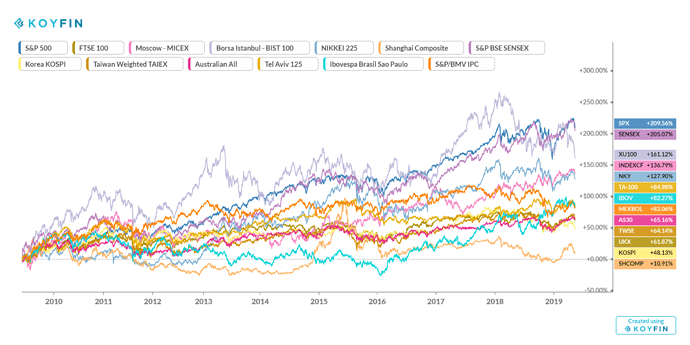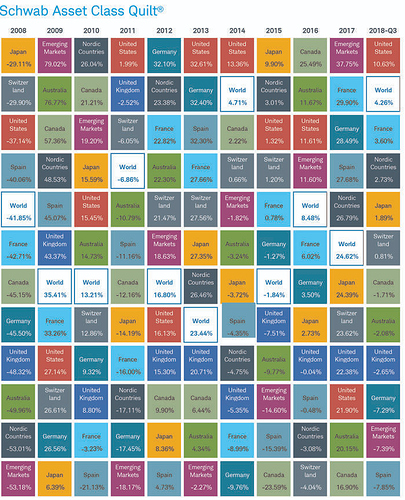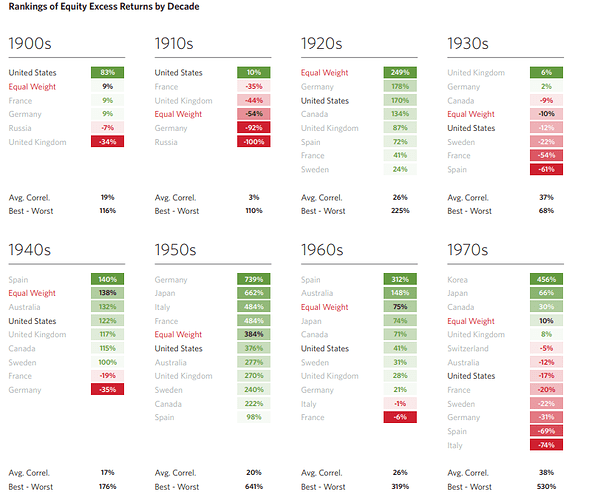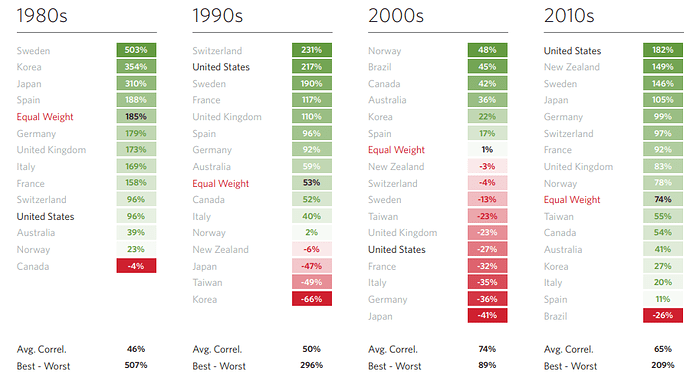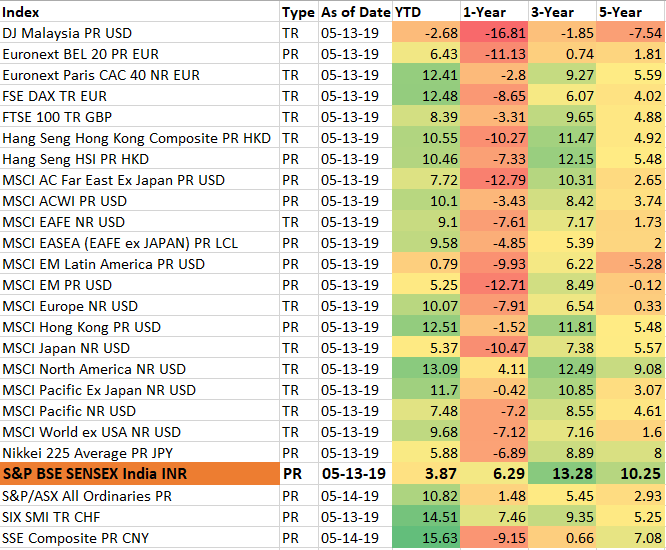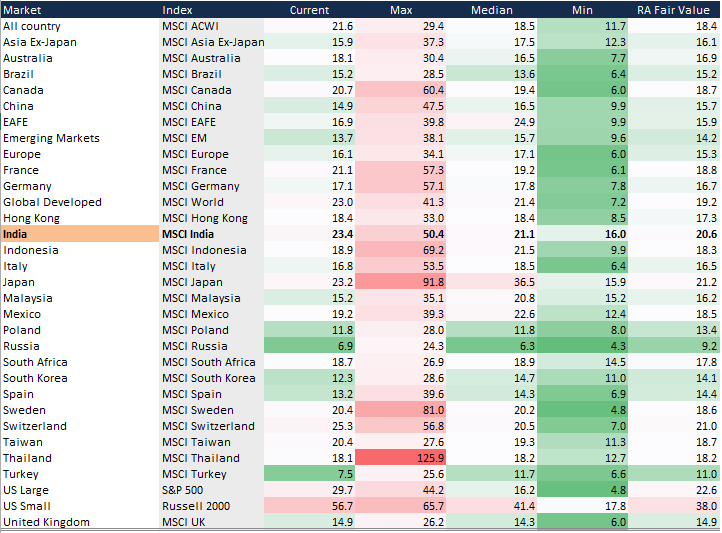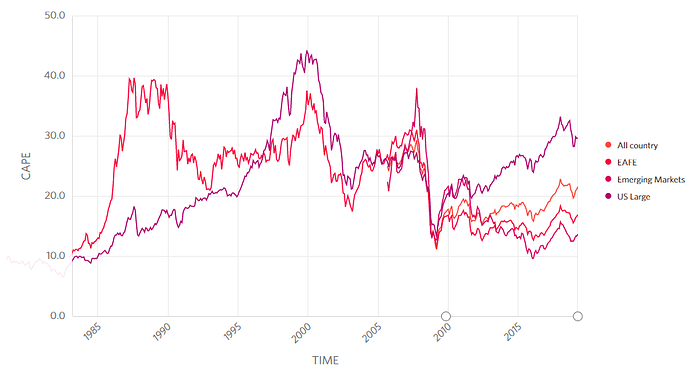There’s plenty of academic literature and real-life research on the merits of geographical diversification but very few investors follow this. A vast majority of investors today suffer from something called “Home Country Bias”. That is we invest in companies of our own countries. This is not just an Indian phenomenon, but rather a global one.
We usually tend to diversify across asset classes such as stocks, bonds, gold, commodities, real-estate among others. The idea with diversification is to not just put all our eggs in one basket but also to invest in asset classes that aren’t always correlated with each other. In any given year, we don’t know which asset class is going to perform well, hence we diversify. For example stocks and bonds over long periods of time have exhibited negative correlation. What this does is, when stocks are going up bonds tend to underperform and vice versa. It also buffers the volatility of your portfolio by adding an element of stability.
While at this point everyone touts diversification not many talk about global diversification.
While we are cognizant of market risks we tend to ignore geographical risks such as economic collapse, debt crises, political upheavals. Just like no asset class tends to perform well all the time, countries too go through cycles of out-performance and under-performance.
Today India has no equivalent of a Google, Facebook, Tesla or an Amazon. The Index is still littered with old economy stocks. The MSCI ACWI index consists of 23 developed and 24 emerging markets. I couldn’t directly get detailed weights of countries however, this is from the SPDR ACWI ETF factsheet. The weight of India is a puny 1.16%. This means that by investing only in India, you are foregoing 99% of investable opportunities in the rest of the world. Do you think that’s smart?
Although over a period of time our world has become globalized and interconnected, global markets aren’t perfectly correlated.
Here are a couple of charts that show how the major markets have performed historically over a period of time. As you can see, there is a wide dispersion of results and this is where diversification comes in.
Source
Quoting from this AQR paper:
Critics of international diversification observe that it does not protect investors against short-term market crashes because markets become more correlated during downturns. Although true, this observation misses the big picture. Over longer horizons, underlying economic growth matters more than short-lived panics with respect to returns, and international diversification does an excellent job of protecting investors.
Anyway, Bridgewater, one of the world largest hedge funds run by celebrated investor Ray Dalio published a new paper titled “Geographic Diversification Can Be a Lifesaver, Yet Most Portfolios Are Highly Geographically Concentrated” that shows why it pays to diversify geographically. It’s data-rich and absolutely insightful. I’d highly recommend reading through the whole paper.
Quoting from the paper:
One common vulnerability is geographic concentration. In the past century, there have been many times when investors concentrated in one country saw their wealth wiped out by geopolitical upheavals, debt crises, monetary reforms, or the bursting of bubbles, while markets in other countries remained resilient. Even without such extreme events, there is always a big divergence across the best and worst performing countries in any given period. And no one country consistently outperforms, as outperformance can lead to relative overvaluation and a subsequent reversal. Rather than try to predict who the winner will be in any particular period, a geographically diversified portfolio creates a more consistent return stream that tends to do almost as well as whatever the best single country turns out to be at any point in time.
The Best and Worst Performers Naturally Fluctuate Through Time as Markets Move Toward Equilibrium Pricing
The paper advocates for an equal-weighted portfolio across countries and re-balancing annually. Although in the US you can simply buy an ETF based on the MSCI World Index or the MSCI ACWI Index, we Indian’s don’t have too many choices when it comes to investing globally. But there are mutual funds - Fund of funds and feeder funds that invest globally. This post has all the international funds available to Indian investors:
Also read:

